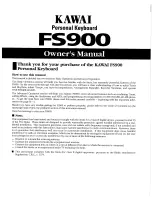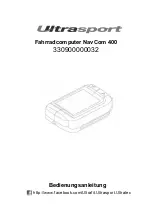
Song Mode
The MAIN Page
8-13
The track selected as the Rec Track will display an (R), designating it as the recording track. If
the Rec Track is set to Mult, the status of all empty tracks will change to Record (R), and any
track can be changed back to empty (–) , mute (M), or Play (P) if recording is not desired on
some tracks.
Channel
Each track has a MIDI Channel that it uses to receive and transmit events. By default, tracks
1–16 of a new song are assigned to Channels 1–16 respectively, although a track can play
or record on any channel and the same channel can be used for more than one track. Keep
in mind, however, that only one program can be assigned to a channel at a time, so if you
have more than one track assigned to the same channel, they’ll play the same program—the
one on the higher-numbered track, since that’s the most recent Program Change command
received on that channel.
Drum Track
Any of the song’s tracks can be defined as a Drum Track so that their Note events do not
get transposed if transposition is applied when using the track as a riff in a Multi (see
“Transpose, Root Note” on page 7-32
.) With tracks designated as
drum tracks, you can transpose a whole song that is being used as a Riff, but the drum tracks
will continue to play the correct sounds that they played in the original key. Otherwise, the
drum sounds would change with each transposition.
With the desired track number selected in the Drum Track field, use the Alpha Wheel or - /+
buttons to toggle between “Y”, to designate the track as a drum track, or “N” to designate
the track as a non-drum track.
The Drum Track settings do not have any effect on edits made in Song Mode. Any tracks
defined as Drum Tracks are still transposed when a transposition is applied to these tracks
from the TRACK page.
Summary of Contents for Flash Play PC4
Page 1: ... It s the sound Part Number 910587 002 Rev B ...
Page 9: ... ix MIDI Implementation A 1 Specifications B 1 Index I 1 ...
Page 289: ... 8 40 ...
Page 328: ... 10 7 ...
















































